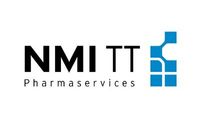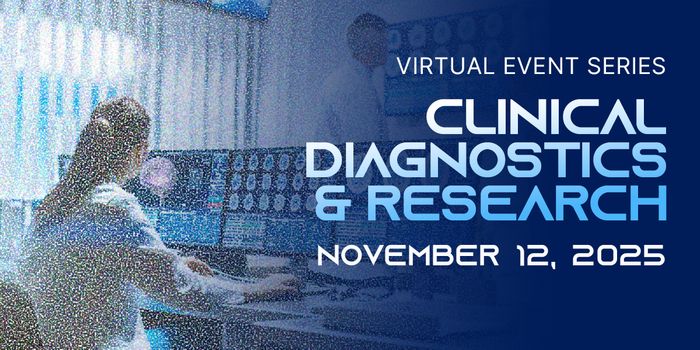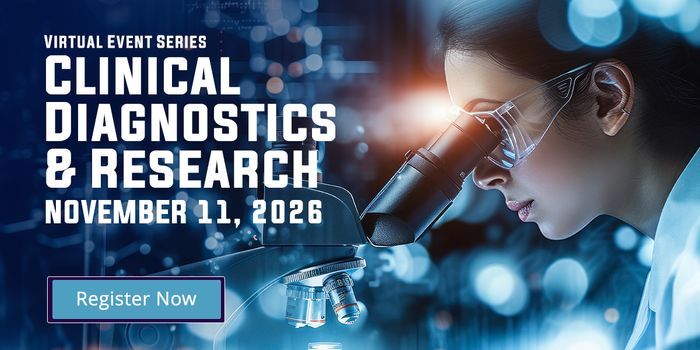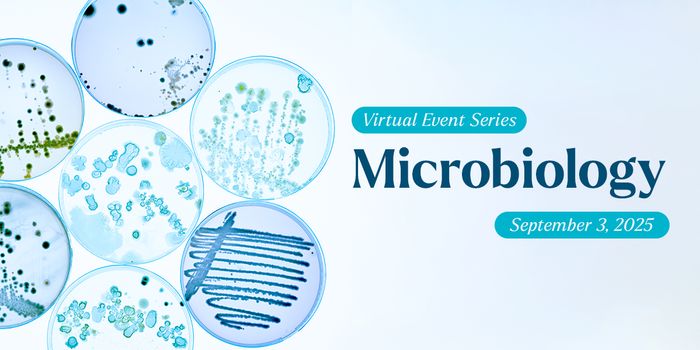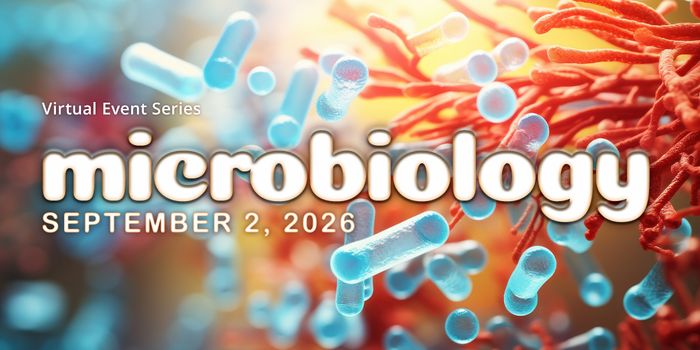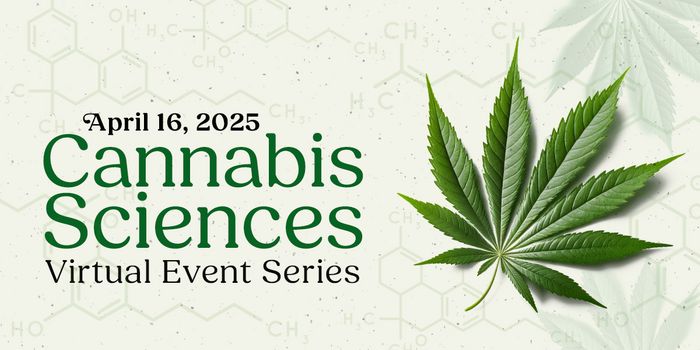At Luminex, our mission is to empower labs to obtain reliable, timely, and actionable answers, ultimately advancing health. Powered by proven xMAP® Technology, we offer a wide range of solutions applicable in diverse markets including clinical diagnostics, pharmaceutical drug ...
See more-
Bio-Rad Laboratories
Bio-Rad Laboratories (NYSE: BIO and BIOb) continues to play a leading role in the advancement of scientific discovery by offering a broad range of innovative tools and services to the life science research and clinical diagnostics markets. Founded in 1952, Bio-Rad has a global ...
See more -
ACD - A Bio-Techne Brand
Bio-Techne empowers researchers in Life Sciences and Clinical Diagnostics by providing high-quality reagents, instruments, custom manufacturing, and testing services. Our family of brands creates a unique portfolio of products and services. Science is our passion; it drives us ...
See more -
NMI TT Pharmaservices
NMI TT Pharmaservices is an established provider of non-clinical contract research for protein profiling services, custom cell services, and electrophysiology services. The company has a long-standing CRO track record with numerous small, medium and large pharma and biotech ...
See more -
MilliporeSigma
Millipore Sigma is a leading science and technology company in healthcare, life science and performance materials. Around 50,000 employees work to further develop technologies that improve and enhance life - from biopharmaceutical therapies to treat cancer or multiple sclerosis ...
See more -
Thermo Fisher Scientific
Thermo Fisher Scientific Inc. (NYSE: TMO) is the world leader in serving science, with annual revenue of over $40 billion. Our Mission is to enable our customers to make the world healthier, cleaner and safer. Whether our customers are accelerating life sciences research, solving ...
See more
xMAP® Connect Virtual Conference (On-Demand)

Inspiring Multiplexing Innovation
- View webinars and posters—by scientists, for scientists—to gain insights from industry experts on how to optimize multiplex immuno and molecular assays
- Access a wide selection of resources, such as white papers, application notes, technical handbooks, product demo videos, and product selection guides
- Connect with application scientists to get multiplexing tips and tricks, plus troubleshooting help
- Visit Luminex Partner booths to learn more about xMAP-based multiplexing solutions
Presentations - Archived Share
-
Antitumor Immune Activity $ Safety of a Novel PD-1 Vaccine Alone & in Combination With 2 Chimeric HER-2 Peptide Vaccine in Syngeneic Balb/C & C57Bl/6 Models & in Canine and Non-Human Primates
Pravin Kaumaya, PhD
Professor of Medicine in Department of Ob/Gyn at the OSU Wexner Medical Center and the James Comprehensive Cancer Center, The Ohio State UniversityBIOGRAPHY -
Comprehensive cervical cancer screening by multiplexed HPV and biomarker mRNA detection using the Quantigene 2.0 platform
-
Development of xMAP based assays for food and environmental safety
Jeroen Peters, MSc
Researcher on RIKILT (Institute of Food Safety), Wageningen University & ResearchBIOGRAPHY -
Direct Detection and Typing of Variety Pathogens Important for Human and Animal Health Using xMAP Technology
-
Lessons Learned in the Pursuit of High Throughput Luminex Analysis on a Budget
Brian McFarlin, PhD
Associate Dean for Undergraduate Studies and Professor, University of North TexasBIOGRAPHY -
Multiplexed ELISA technology: Successful MFIA applications in the Swine Industry
Wim Schielen, PhD
Treasurer, Chair Guidelines Committee at EWDTS - European Workplace Drug Testing Society, BioVet Europe -
Quality Aspects and Applications for Multiplex Immunossays

| No. 1 | New CE-certified multiplex test systems for serological detection of Treponema pallidum and Bordetella pertussis infections |
| Marianne Brill, Alexander Herr, Kathrin Lang, Christian Meyer, Christine Reichhuber, Oliver Böcher, Erwin Soutschek | |
| No. 2 | Screening antibody signatures against major bacterial pathogens using the “Infection Array”, a high-throughput assay based on the xMAP® technology |
| Nicole Normann1, Matthias Gründling2, Stephan Michalik3, Tanja C. Meyer3*, Goran Abdurrahman1, Uwe Völker3, Barbara M. Bröker1, Silva Holtfreter1, Dina Raafat1,4
1 Department of Immunology, Institute of Immunology and Transfusion Medicine, University Medicine Greifswald, 17475 Greifswald, Germany; 2 Department of Anaesthesiology and Intensive Care Medicine, University Medicine Greifswald, 17475 Greifswald, Germany; 3 Department of Functional Genomics, Interfaculty Institute for Genetics and Functional Genomics, University Medicine and University Greifswald, 17475 Greifswald, Germany; 4 Department of Microbiology and Immunology, Faculty of Pharmacy, Alexandria University, 21521 Alexandria, Egypt *Current position: Robert Koch Institute, 13353 Berlin, Germany |
|
| No. 3 | All in one sweep - a Legume Allergen Detection Assay (LADA) |
| Norbert Lidzba1, Leander Malessa2, Paul Rautenberger3, Jörg Lehmann4 and Elke Ueberham5
1,2,3,4,5 Fraunhofer Institute for Cell Therapy and Immunology, Dept. Therapy Validation |
|
| No. 4 | Clathrin-mediated endocytosis inhibitor can limit activation of neutrophils by plasma derived extracellular vesicles from patients with granulomatosis with polyangiitis |
| Marcin Surmiak1, Joanna Kosałka1, Rafał Szatanek2, Marek Sanak1
1 Department of Internal Medicine, Jagiellonian University Medical College, Krakow, Poland 2 Department of Clinical Immunology, Jagiellonian University Medical College, Krakow, Poland |
|
| No. 5 | Contents of some chemokinesin the blood plasma of children and adults patients with chronic hepatitis B |
| Arsentieva N.A.1, Batsunov O.K.1,2, Lyubimova N.E.1, Semenov A.V.1, 2, Shilova I.V.3, Totolian A.A.1,2
1 Saint-Petersburg Pasteur Institute, St. Petersburg, Russia 2 Pavlov First Saint-Petersburg State Medical University, St. Petersburg, Russia 3 Federal State-Financed Institution Pediatric Research and Clinical Center for Infectious Diseases, St. Petersburg, Russia |
|
| No. 6 | Biomarker discovery for disease phenotyping/end otyping anddisease severity scoring in atopic dermatitis |
| E.M.Delemarre1, D.J. Hijnen2,3, J. Drylewicz1, M.S. de Bruin-Weller2, E.F. Knol1,2, B. Giovannone1,2, C.A.F.M. Bruijnzeel-Koomen2, S. Nierkens1, J.L. Thijs2
1 Center of Translational Immunology, University Medical Center Utrecht, The Netherlands. 2 Department of Dermatology and Allergology, University Medical Center Utrecht, The Netherlands. 3 Currently, Department of Dermatology, Erasmus Medical Center, Rotterdam, The Netherlands |
|
| No. 7 | Detection of African swine fever virus by xMAP® technology |
| Krasna M.1, Králik P.1, Vašíčková P.1
1 Veterinary Research Institute, v.v.i, Brno, CZ This project was supported by the Ministry of Agriculture of the Czech Republic (Grant No. QK 120113). |
|
| No. 8 | Development of an xMAP® pentaplex antibody assay used for uveitis diagnostics |
| F. Meindertsma, S van Loenen, C. Uzel, F.M. Verduyn Lunel, J.D.F. de Groot-Mijnes; Department of medical microbiology, University Medical Center Utrecht, The Netherlands. | |
| No. 9 | Development of detection panel for the simultaneous screening of biothreat agents B. anthracis, Y. pestis, F. tularensis and Brucella spp. by MOL-PCR method |
| Pavlina Jelinkova | |
| No. 10 | Dynamics of biomarkers HSP60, IGF1R, PLA2G7 AND sST2 in patients with left ventricular remodeling after acute myocardial infarction |
| Gusakova A.М., Kercheva M.А., Suslova Т.Е., Ryabova T.R., Kologrivova I.V., Ogurkova O.N., Kravchenko E.S., Trubacheva O.A., Ryabov V.V.
Cardiology Research Institute, Tomsk National Research Medical Center, Russian Academy of Sciences |
|
| No. 11 | Employment of MOL-PCR in bacterial pathogen detection in small ruminants |
| Iva Slana, Veterinary Research Institute | |
| No. 12 | High-throughput xMAP®-technology in detection of epicardial adipose tissue thickening biomarkers in coronary artery disease patients |
| Kologrivova I.V., Suslova T.E., Gusakova A.M., Ogurkova O.N., Kravchenko E.S., Koshelskaya O.A., Vinnitskaya I.V., Trubacheva O.A., Haritonova O.A.
Cardiology Research Institute, Tomsk National Research Medical Center of the Russian Academy of Sciences, Tomsk, Russia |
|
| No. 13 | Peripheral blood vascular biomarkers changes in response to carotid endarterectomy in asymptomatic patients with hemodynamically significant carotid artery stenosis. |
| Miłosz P. Kawa1, Karolina Łuczkowska1, Szymon Wnęk1, Arkadiusz Kazimierczak2, Paweł Rynio2, Anita Rybicka2, Anna Sobuś1, Dorota Rogińska1, Ewa Pius-Sadowska1, Aleksandra Kowalska-Budek3, Anna Machalińska3, Piotr Gutowski2, Bogusław Machaliński2
1 Department of General Pathology, 2 Department of Vascular Surgery and Angiology, 3 First Department of Ophthalmology, from Pomeranian Medical University, Szczecin, Poland |
|
| No. 14 | Automated QC analysis of high-throughput FlexMAP®3DTM biomarker discovery screens using integrated R markup language |
| M. Bräutigam1, E. Schäfer1, J. Gajewski1, J. Löseke1, P. Budde1, H.-D. Zucht1
1 Oncimmune Germany GmbH, Otto-Hahn-Str. 15, 44227 Dortmund, Germany |
|
| No. 15 | Fetomaternal red blood cells alloimmunization and universal cord blood screening at birth: one-center experience |
| M. Ndour1, 2, 3, S Diop3, T Dieye2, E Lazarova*1
1 Transfusion Laboratory, CUB Erasme Hospital, ULB, Brussels, Belgium, 2 Immunology unit of Bactriology-Virology Laboratory, Aristide Le Dantec Hospital Dakar, 3 National blood transfusion center, CNTS, Dakar, Senegal |
|
| No. 16 | Optimisation of incubation times for a Pneumococcal multiplex assay |
| Helen Crawford1, Abigail Bell1, Marco Maggio1, Ezra Linley1, Ray Borrow1
1 Vaccine Evaluation Unit, Public Health England, Manchester, UK |
|
| No. 17 | Methods for coupling antigens to MagPlex® beads |
| Sanne Schou Berger
Centre for Diagnostics, Technical University of Denmark |
|
| No. 18 | Multiplex Panels for Neurobiology – Biomarkers for Neuroinflammation, Neurodegeneration and Brain Injury |
| Damon Cook & Shekar Menon
Thermo Fisher Scientific, 5823 Newton Dr, Carlsbad, CA 92008 |
|
| No. 19 | Different biomarkers levels in blood when comparing serum versus anticoagulated plasma. |
| R.C. Scholman1,2, B. Giovannone2,3, S. Hiddingh3,4, J.M. Meerding1,2, E.F. Knol2,3, B. Malvar Fernandez3,4, M.E.A. van Dijk2, M.J.Tempelman2, B.J. Prakken1,2, W. de Jager1,2
1 Department of Pediatric Immunology, University Medical Center Utrecht, The Netherlands 2 Multiplex Core Facility, Laboratory of Translational Immunology, University Medical Center Utrecht, The Netherlands 3 Department of Dermatology and Allergology, University Medical Center Utrecht, The Netherlands. 4 Department of Rheumatology and Clinical Immunology, University Medical Center Utrecht, The Netherlands. |
|
| No. 20 | Serum insulin-like growth factor receptor - 1, sST2 and NT-proBNP changes in patients with heart failure decompensation and ischemic left ventricular systolic dysfunction |
| O.N. Ogurkova, T.E. SuslovaV.V., Ryabov.A.M., E.V. Kruchinkina, A. M. Gusakova, I.V. Kologrivova, E.S. Kravchenko.
Cardiology Research Institute, Tomsk National Research Medical Center of the Russian Academy of Sciences, Tomsk, Russia |
|
| No. 21 | The concentration of chemokines in blood plasma in healthy donors of two populations |
| Lyubimova N. E., Arsentieva N. A. Batsunov O. K., Semenov A. V., Totolian A. A.
Saint-Petersburg Pasteur Institute, St. Petersburg, Russia |
|
| No. 22 | The study of the features of regulatory hormones as a component of the pathogenesis of the metabolic syndrome in schizophrenia |
| Anastasiia S. Boiko, Irina A. Mednova, Elena G. Kornetova, Svetlana A. Ivanova
Mental Health Research Institute, Tomsk NRMC of the RASc, Tomsk, Russian Federation |
|
| No. 23 | xMAP® technology - multiplex system for fast detection of viruses associated with food-/waterborne infections |
| Hrdý Jakub1,2, Vašíčková Petra1, Králík Petr1
1 Veterinary Research Institute, v.v.i, Brno, CZ 2 Department of Clinical Immunology, Jagiellonian University Medical College, Krakow, Poland This work was supported by the Ministry of Health of the Czech Republic (Grant No. NV17-31921A). |
|
| No. 24 | QuantiGene Plex Analysis of ADME Gene Expression in Primary Human Hepatic 3D Spheroid Culture |
| Sujoy Lahiri1, Jason H. Stafford2, Julia Tritapoe1, Michael F. Millett1, Deborah K. Tieberg1, and David T. Kuninger1
1 Bell et al. Scientific Reports 2015 6:25187 DOI: 10.1038/srep25187 2 Moeller et al. Thermo Fisher Application Note: Transcript regulation of 18 ADME genes by prototypical inducers in human hepatocytes |
|
| No. 25 | Multiplex Panels for Neurobiology – Biomarkers for Neuroinflammation, Neurodegeneration and Brain Injury |
| Damon Cook & Shekar Menon, Thermo Fisher Scientific, 5823 Newton Dr, Carlsbad, CA 92008 |





